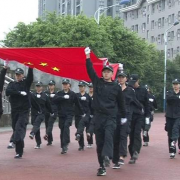地点状语?地点状语有哪些
来源:择校网 时间:2024-11-06 14:38:44
一、举例说明时间状语、地点状语、原因状语、条件状语等等
1.时间状语从句常用引导词:when, as, while, as soon as, before, after, since, till, until特殊引导词:the minute, the moment, the second, every time, the day,the instant, immediately, directly, no sooner… than, hardly…when, scarcely… when I didn’t realize how special my mother was until I became an adult. While John was watching TV, his wife was cooking. The children ran away from the orchard(果园), the moment they saw the guard. No sooner had I arrived home,then it began to rain. Every time I listen to your advice, I get into trouble. 2.地点状语从句常用引导词:where特殊引导词:wherever, anywhere, everywhere Generally, air will be heavily polluted where there are factories. Wherever you go, you should work hard. 3.原因状语从句常用引导词:because, since, as, for特殊引导词:seeing that, now that, in that, considering that, given that. My friends dislike me because I’m handsome and successful. Now that everybody has come, let’s begin our conference. The higher income tax is harmful in that it may discourage people from trying to earn more. Considering that he is no more than 12 years old, his height of 1.80 m is quite remarkable. 4.目的状语从句常用引导词:so that, in order that特殊引导词:lest, in case, for fear that,in the hope that, for the purpose that, to the end that The boss asked the secretary to hurry up with the letters so that he could sign them. The teacher raised his voice on purpose that the students in the back could hear more clearly. 5.结果状语从句常用引导词:so… that, such… that,特殊引导词:such that, to the degree that, to the extent that, to such a degree that, He got up so early that he caught the first bus. It’s such a good chance that we must not miss it. To such an degree was he excited that he couldn’t sleep last night. 6.条件状语从句常用引导词:if, unless,特殊引导词:as/so long as, only if, providing/provided that, supposing that, in case that, on condition that We’ll start our project if the president agrees. You will certainly succeed so long as you keep on trying. Provided that there is no opposition, we shall hold the meeting here. 7.让步状语从句常用引导词:though, although, even if, even though特殊引导词: as(用在让步状语从句中必须要倒装),while(一般用在句首),no matter…, in spite of the fact that, while, whatever, whoever, wherever, whenever, however, whichever Much as I respect him, I can’t agree to his proposal.尽管我很尊敬他,我却不同意他的建议。 The old man always enjoys swimming even though the weather is rough. No matter how hard he tried, she could not change her mind. He won’t listen whatever you may say. 8.比较状语从句常用引导词:as(同级比较), than(不同程度的比较)特殊引导词:the more… the more…; just as…, so…; A is to B what/as X is to Y; no… more than; not A so much as B She is as bad-tempered as her mother. The house is three times as big as ours. The more you exercise, the healthier you will be. Food is to men what oil is to machine.食物之于人,犹如油之于机器。 9.方式状语从句常用引导词:as, as if, how特殊引导词:the way When in Rome, do as the Roman do. She behaved as if she were the boss. Sometimes we teach our children the way our parents have taught us.
二、地点状语是什么意思
地点状语是什么意思介绍如下:
地点状语是英语中的一种状语,用于表示动作所发生的地点或位置,通常放在句子中的动词或谓语动词后面。以下是几种常见的英语地点状语:
1. Adverbial of place:表示具体地点的地点状语。例如:in the park(在公园里)、on the street(在街上)等。
2. Adverbial of direction:表示动作的方向的地点状语。例如:to the north(向北)、down the road(沿着路往下走)等。
3. Adverbial of distance:表示距离的地点状语。例如:a mile away(一英里远)、just around the corner(拐角处)等。
4. Adverbial of position:表示位置的地点状语。例如:at the front(在前面)、behind the house(房子后面)等。
5. Adverb of manner:表示运动的方式的地点状语。例如:by bike(骑自行车)、on foot(步行)等。
注意,在英语中,有些动词已经包含了地点信息,而不需要使用地点状语,如live(住)、work(工作)等。因此,在使用地点状语时需要根据具体语境来判断是否需要使用。
三、地点状语有哪些
地点状语是英语中的一种状语,用于表示动作所发生的地点或位置,通常放在句子中的动词或谓语动词后面。以下是几种常见的英语地点状语:
1. Adverbial of place:表示具体地点的地点状语。例如:in the park(在公园里)、on the street(在街上)等。
2. Adverbial of direction:表示动作的方向的地点状语。例如:to the north(向北)、down the road(沿着路往下走)等。
3. Adverbial of distance:表示距离的地点状语。例如:a mile away(一英里远)、just around the corner(拐角处)等。
4. Adverbial of position:表示位置的地点状语。例如:at the front(在前面)、behind the house(房子后面)等。
5. Adverb of manner:表示运动的方式的地点状语。例如:by bike(骑自行车)、on foot(步行)等。
注意,在英语中,有些动词已经包含了地点信息,而不需要使用地点状语,如live(住)、work(工作)等。因此,在使用地点状语时需要根据具体语境来判断是否需要使用。
四、英语地点状语
地点状语是英语中的一种状语,用于表示动作所发生的地点或位置,通常放在句子中的动词或谓语动词后面。以下是几种常见的英语地点状语:
1. Adverbial of place:表示具体地点的地点状语。例如:in the park(在公园里)、on the street(在街上)等。

2. Adverbial of direction:表示动作的方向的地点状语。例如:to the north(向北)、down the road(沿着路往下走)等。
3. Adverbial of distance:表示距离的地点状语。例如:a mile away(一英里远)、just around the corner(拐角处)等。
4. Adverbial of position:表示位置的地点状语。例如:at the front(在前面)、behind the house(房子后面)等。
5. Adverb of manner:表示运动的方式的地点状语。例如:by bike(骑自行车)、on foot(步行)等。
注意,在英语中,有些动词已经包含了地点信息,而不需要使用地点状语,如live(住)、work(工作)等。因此,在使用地点状语时需要根据具体语境来判断是否需要使用。
如果你还想了解更多这方面的信息,记得收藏关注本站。







